The Montenegro flag reflects the nation’s spirit and forward-looking aspirations. It encapsulates the resilience and diversity of its people, and it’s deeply rooted in Montenegro’s history and natural beauty, speaking volumes about the country’s journey and vision.
Flag of Montenegro
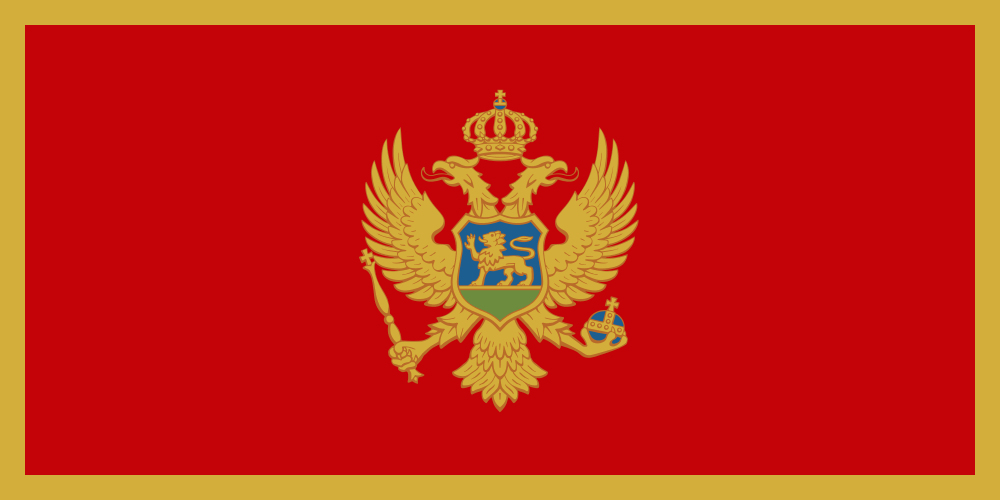
The flag of Montenegro features a unique and striking design characterized by a red field with a gold border. At its center, it proudly displays the national coat of arms, which consists of a two-headed eagle in gold, symbolizing the country’s Orthodox Christian heritage and its connections to the Byzantine Empire.
The eagle holds a shield that bears a lion, a traditional symbol of strength and courage, harking back to the days of Venetian rule. Above the eagle is a golden crown, representing the sovereignty and independence of Montenegro.
Montenegro Flag: Color Palette
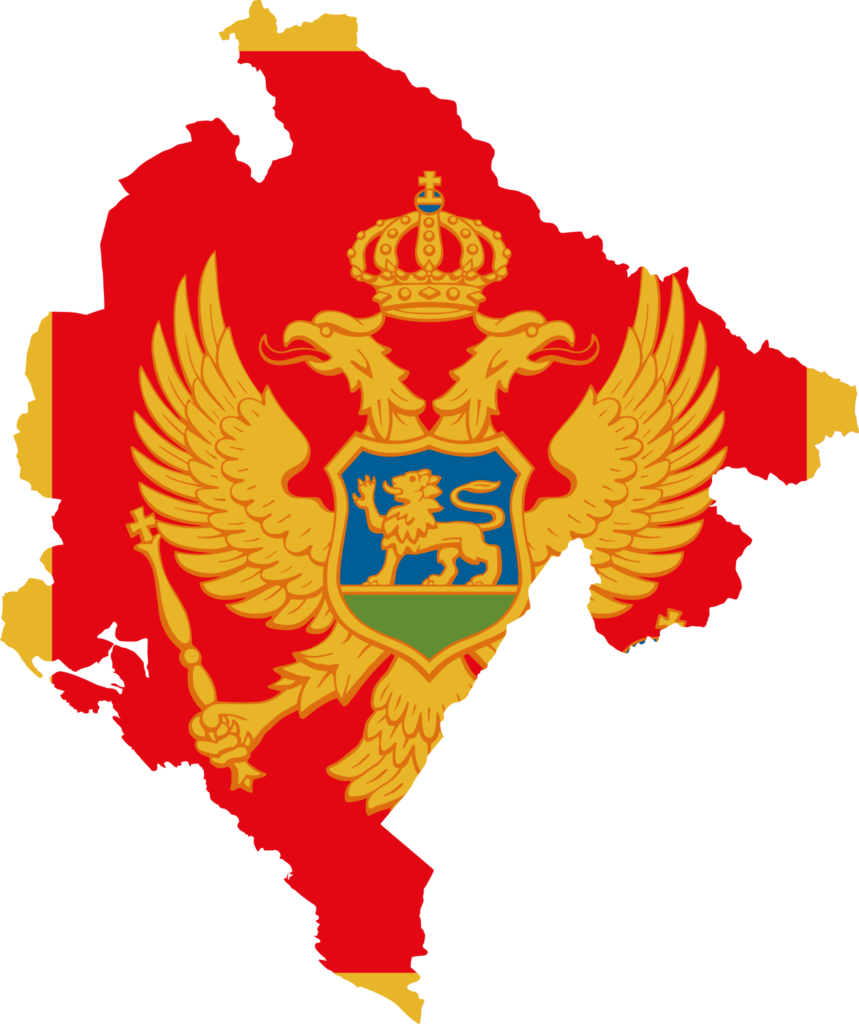
Montenegro Flag Emoji: 🇲🇪
The Montenegro flag’s color palette is visually striking and symbolically rich, primarily red and gold. These colors are chosen for their aesthetic appeal and deep-seated meanings, which are intricately tied to the essence of the nation and its values.
Meaning of Each Color
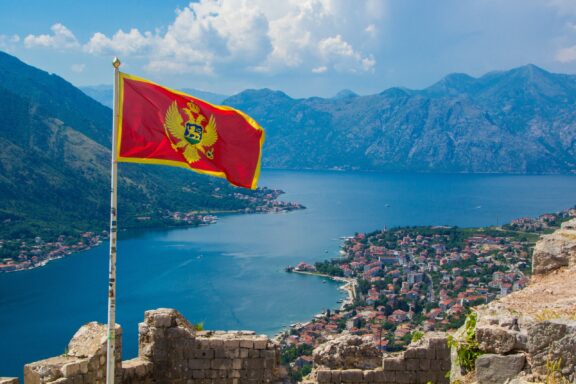
Red
The dominant red background of Montenegro’s flag is a powerful symbol deeply rooted in the nation’s history. It represents the blood shed by Montenegrin warriors through various struggles for independence and freedom.
This color encapsulates the courage and sacrifice of the people, showcasing their resilience in the face of adversity.
Gold
The gold border that frames the flag symbolizes the nation’s wealth and prosperity. This color choice is aesthetically pleasing and represents the country’s aspirations for a prosperous future.
Gold also highlights the chronological richness of Montenegro, reflecting its past achievements and cultural depth.
Coat of Arms of Montenegro
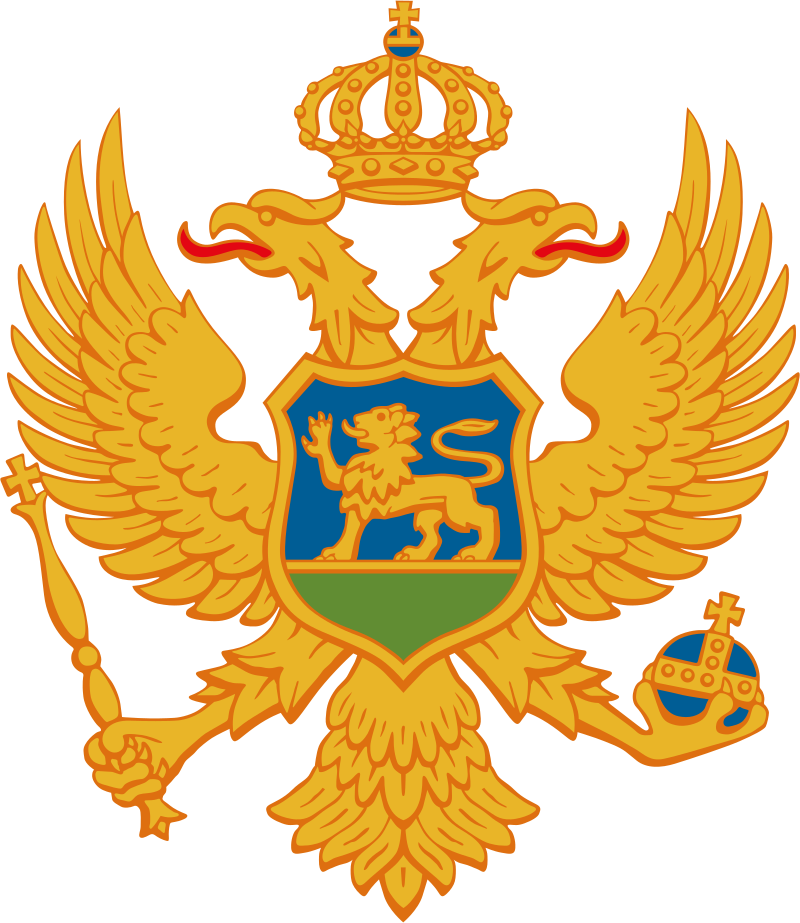
The Coat of Arms of Montenegro vividly represents the nation’s rich historical and cultural fabric. Central to this emblem is the two-headed golden eagle, a symbol deeply rooted in Byzantine tradition.
With its dual heads, this eagle signifies the intertwining of earthly and divine authority, reflecting Montenegro’s Orthodox Christian heritage and its historical connections to the Byzantine Empire.
- The Shield: Adorning the eagle’s chest is a shield featuring a golden lion against a blue sky, standing on a green field. This lion, echoing the winged lion of Venice, pays homage to the Venetian rule over Montenegrin coastal areas.
- The Globus Cruciger: Held in the eagle’s claws, this Christian symbol depicts a blue orb with a golden cross, signifying Christ’s dominion over the world and Montenegro’s Christian roots.
- The Crown: The golden crown above the eagle symbolizes Montenegro’s independence and the state’s dignity.
- The Scepter: Also held by the eagle, it represents royal authority and governance.
This intricate emblem signifies the nation’s authority and encapsulates its diverse cultural heritage and the depth of its historical narrative.
Historical Evolution and the Meaning Behind Changes
The evolution of Montenegro’s flag reflects its prosperous and varied past, marked by influences from different eras and rulers. Initially, the flag bore symbols reflecting religious and royal influences, particularly from Christian and Pan-Slavic traditions.
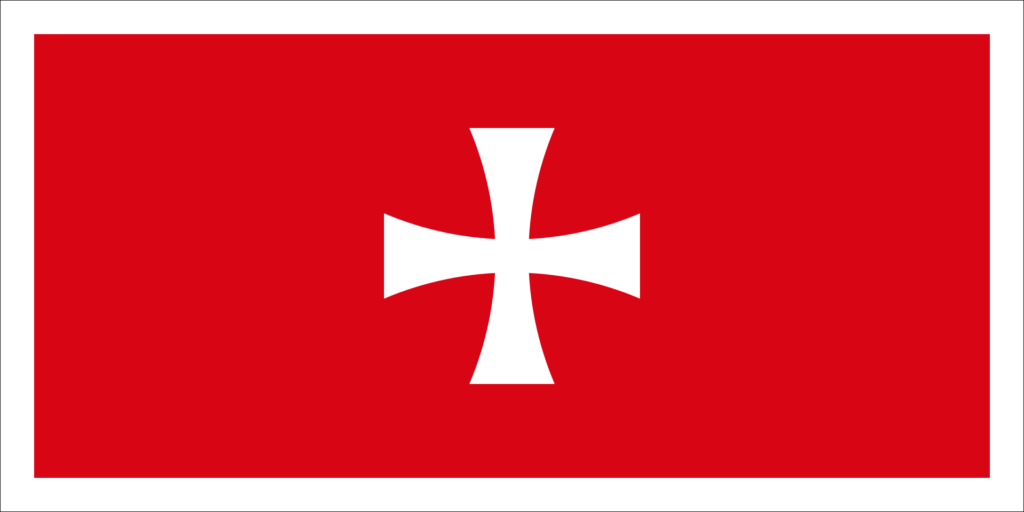
In the 19th century, the design aligned with Montenegro’s recognition as an independent nation, influenced by its connections with Serbia and Russia.
After World War I, Montenegro’s flag identity merged with the broader Yugoslav state, losing distinct national symbols as part of the Kingdom of Serbs, Croats, Slovenes, and later Yugoslavia. This period saw the adoption of simpler designs, in line with the socialist ethos of the time.
The breakup of Yugoslavia marked a turning point, leading to a re-emergence of Montenegro’s distinct national identity. The flag adopted in 1993, unique from other former Yugoslav republics, expressed this newfound independence.
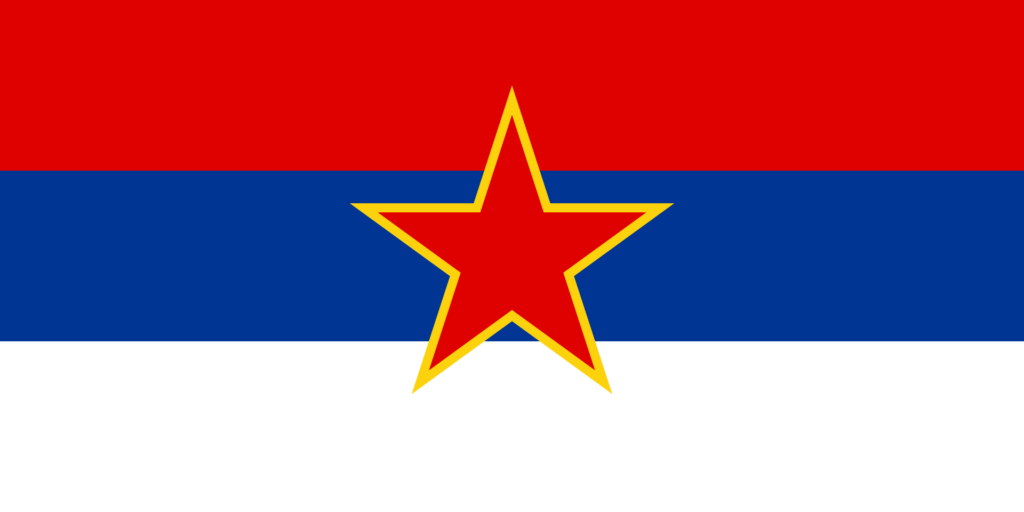
A major change occurred in 2004, with Montenegro returning to historical and cultural symbols through a new flag design.
With its distinct colors and the emblematic two-headed eagle, this flag reassigned the nation’s history and culture, distancing itself from its Yugoslav past and emphasizing its liberty.

Overall, the flag’s transformation over the years is not just a change in design but a narrative of Montenegro’s historical voyage, political shifts, and the continuous evolution of Montenegro.
Overall Symbolic Meaning of the Flag
The flag of Montenegro weaves together the nation’s history, autonomy, and character. Its design embodies Montenegro’s roots and journey as a sovereign state and encapsulates a blend of tradition and modernity, reflecting the historical influences that have shaped the nation and its aspirations for the future.
Similar Flags to the Flag of Montenegro
The flag of Montenegro, with its distinctive features and symbolism, shares similarities with a few other flags, primarily due to common historical influences and cultural exchanges.
Albania
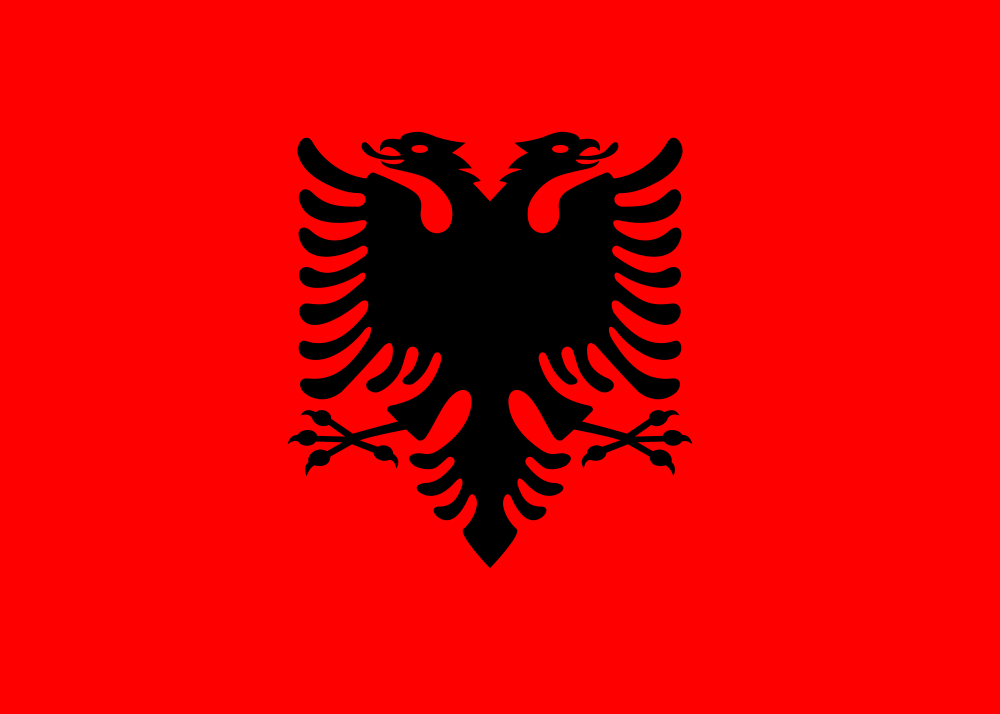
Both the Montenegrin and Albanian flags prominently feature a two-headed eagle, a symbol deeply ingrained in the heraldic traditions of the Balkans.
This similarity arises from the region’s shared cultural and historical influences, particularly from the Byzantine Empire, which popularized this symbol.
Serbia
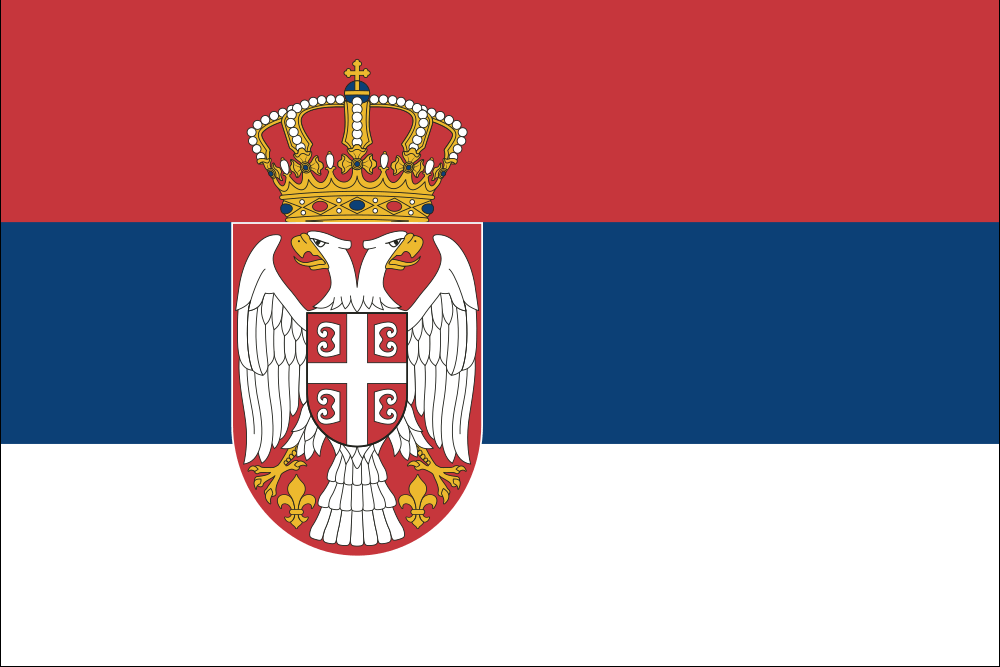
The Montenegrin flag also resembles the Serbian flag, particularly in its use of traditional heraldic symbols. This reflects their intertwined history in the Balkans and shared Slavic heritage. Both nations’ flags are influenced by their past monarchies and historical alliances.
Austria
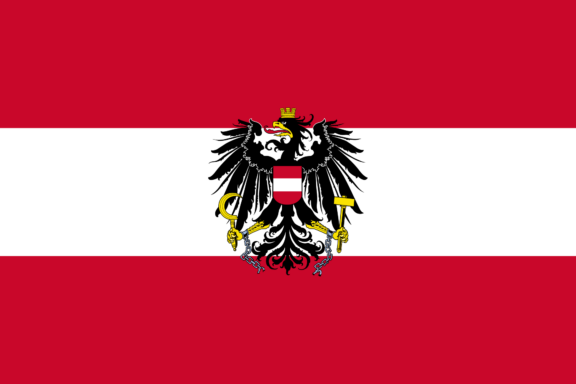
The Montenegrin flag can be compared to the historical flag of Austria, especially in terms of the eagle motif. The double-headed eagle is a common element in European heraldry and was notably used in the Austro-Hungarian Empire.
This resemblance highlights the broader influence of European heraldic traditions in Montenegro’s flag design.
Final Thoughts
The flag of Montenegro demonstrates the nation’s uniqueness and prosperity. Within the global community of flags, Montenegro’s emblem represents a proud history and a future filled with desires for a better future, resonating deeply with the citizens of Montenegro.
Image Sources and Copyright Information
- Montenegro Flag Overlooking Kotor Bay: © Morrowind/Shutterstock